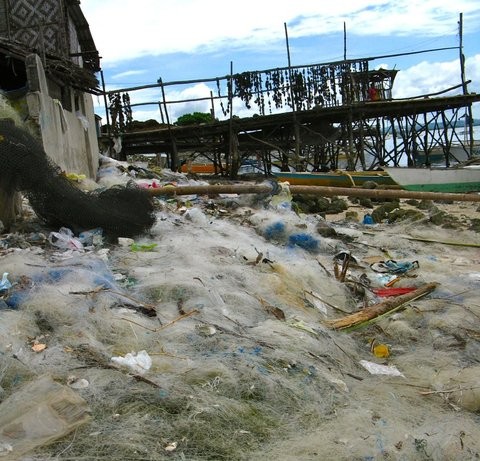A Second Life for Discarded Fishing Nets

Abandoned and lost fishing gear makes up about 10 percent of the trash that collects in the world’s oceans, according to a report from the United Nations. Much of this debris is lost in storms, vandalized or simply discarded. It piles up on beaches, creates a navigational hazard for boats or settles to the bottom, where it can damage sensitive ecosystems. Discarded nets can cause a particular problem as they continue to “ghost fish,”trapping fish and other sea animals like turtles, seabirds and dolphins.
Much of this material can find a second life, according to the United Nations report, which was issued in 2009. For instance, a number of programs in the United States, with support from the National Oceanic and Atmospheric Administration, now collect old fishing nets and other debris to generate electricity in waste-to-energy plants.
But in many areas, especially in the poorest regions, local fishermen lack incentives to properly dispose of worn-out gear. That problem was front and center last week on World Oceans Day, an annual happening where individual events around the world draw attention to concerns like overfishing and ocean pollution.
To coincide with World Oceans Day, Interface, the global carpet manufacturer, proposed a novel solution to the problem: turning discarded fishing nets into new carpet tiles while providing income to the communities that collect the nets. Interface said it would form a partnership with the Zoological Society of London to introduce Net-Works, a six-month pilot program with the coastal fishing community of Danajon Bank in the Philippines.
In this ecologically fragile coral reef area, thousands of families eke out their living by fishing the local waters. But they also leave behind thousands of miles of discarded nets each year — enough to cover the bank 400 times over, according to estimates.
During the pilot program, local community groups will oversee the collection, processing and transportation of the nets. Payments for the material will be used to finance economic development programs in the community. The point of the program, said Nigel Stansfield, Interface’s chief innovations officer, will initially be to gauge how best to distribute the funds to the community and to assess how much material can be collected.
Interface consistently ranks among the world’s most sustainably minded companies, thanks to its founder, Ray Anderson. As part of his ambitious green agenda, Mr. Anderson committed the company to eliminating its environmental footprint by 2020.
Currently, some 44 percent of the material the company uses to make carpet is either recycled or products derived from renewable biological resources, Mr. Stansfield said. He hopes that projects like Net-Works will further reduce the company’s reliance on virgin raw materials while fulfilling an important social mission.
If the program proves successful, the company will look to take it to other communities, he said.



